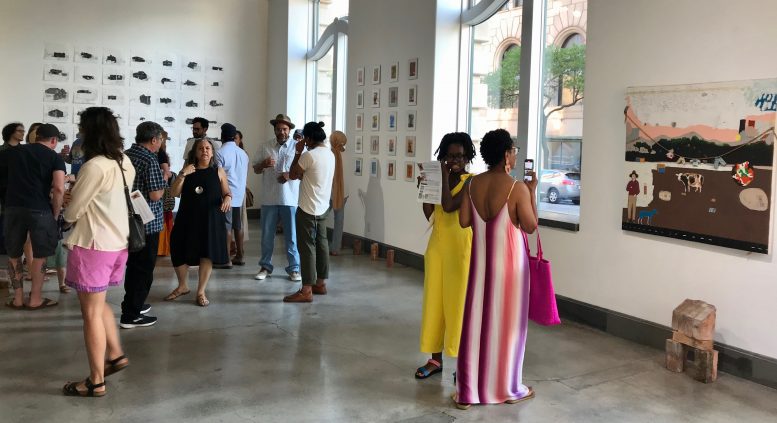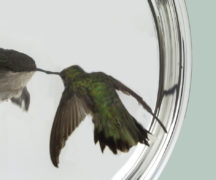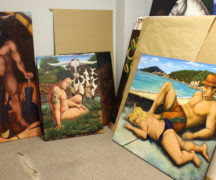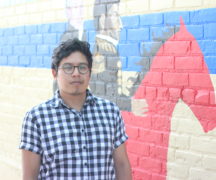By DAVID DUPONT
BG Independent News
San Francisco Coapan, an indigenous community in central Mexico, has many empty homes.
The place was known for its brick making. When the North American Free Trade Agreement went into effect in the mid-1990s, the locals found they now had to compete with multinational corporations. The local economy cratered, and many residents, as many as half, headed north to the United States as economic migrants.
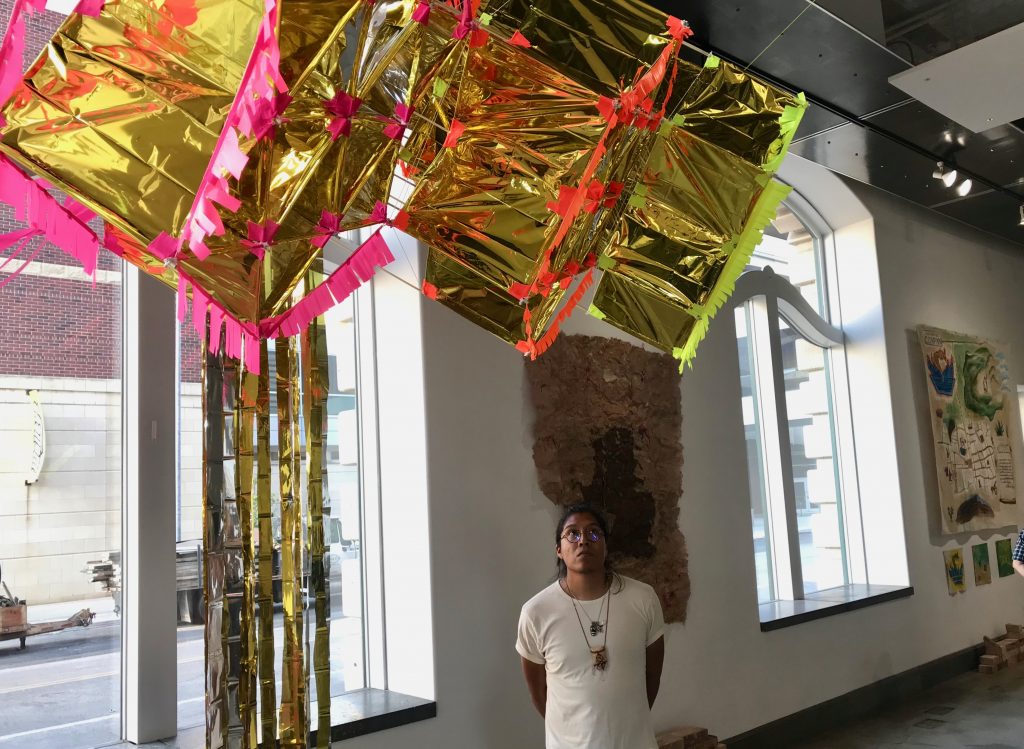
Federico Cuatlacuatl’s parents were among them. They ended up in Indiana, while their sons, David and Federico, stayed behind with relatives.
For five years the family lived apart. They were not reunited until Christmas, 1999, Federico recalls. David was 10 and Federico was 7.
Left behind was the home in Coapan, a village within the municipality of Cholula in the state of Puebla. The elder Cuatlacuatls had continued adding onto the house in hopes of one day returning. They have yet to be able to do that. Five years ago, the Cuatlacuatl brothers, both artists, were able to return to Mexico, after the Deferred Action for Childhood Arrivals program was enacted.
They turned the house into an art center. They invited artists, including some they knew from Northwest Ohio, to live and work at the house in June and July and create art that celebrates the locale and its culture and reflect on its history and the turmoil that has engulfed it.

Federico said that “the excitement was not just to return to our community but to share that with other artists.”
He continued: “Since 2016, we have been hosting artists internationally in our hometown. A lot of the emphasis is to encourage artists to do community-based work, not necessarily to abandon their own practice but consider how their own practice expands into community-based work. They do workshops with the community. They participate in activities and festivities as part of the local traditions.”
The artists haven’t been able to travel to the residency because of the pandemic for the past two summers. So Federico Cuatlacuatl has assembled an exhibit, “Pisando Lodo (Treading Mud),” now on display through July 3 at River House Arts, 425 Jefferson in downtown Toledo. The gallery is open by appointment. Call 419-441-4025.
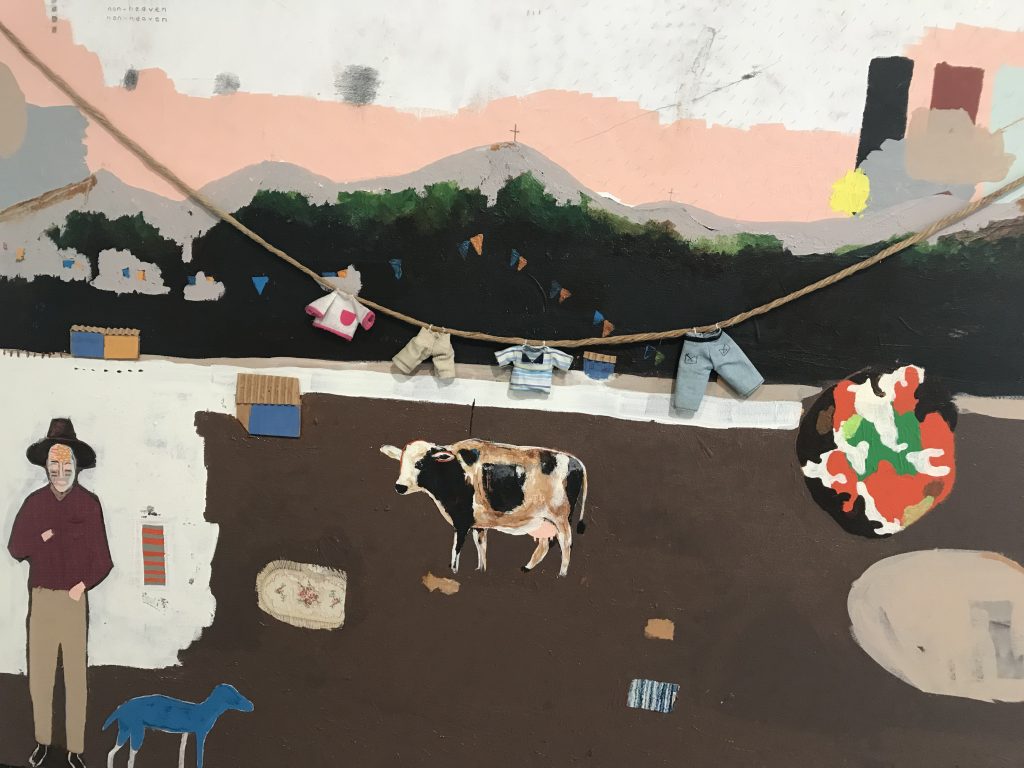
The exhibit by what’s now called Colectivo Rasquache includes “By the Road” by David Cuatlacuatl. The artist died at 27 in 2017 when his car was struck by a wrong-way driver. At the time he was working as the resident artist with the Sofia Quintero Art and Cultural Center in South Toledo.
The piece on display uses found materials to create a pastoral scene.
“That’s part of the ethos of Rasquache,” his younger brother Federico Cuatlacuatl said, “making the most from the least. It’s also an appreciation of what’s already at hand, what’s already at site. For us it’s really important that we’re valuing what’s already in the community and not only the materiality, but the relationships, the people, the culture, the history.”
Toledo artist Yusuf Lateef created a series of 20 prints of images of the nopal cactus, which plays an important role in the area’s food and its economy.
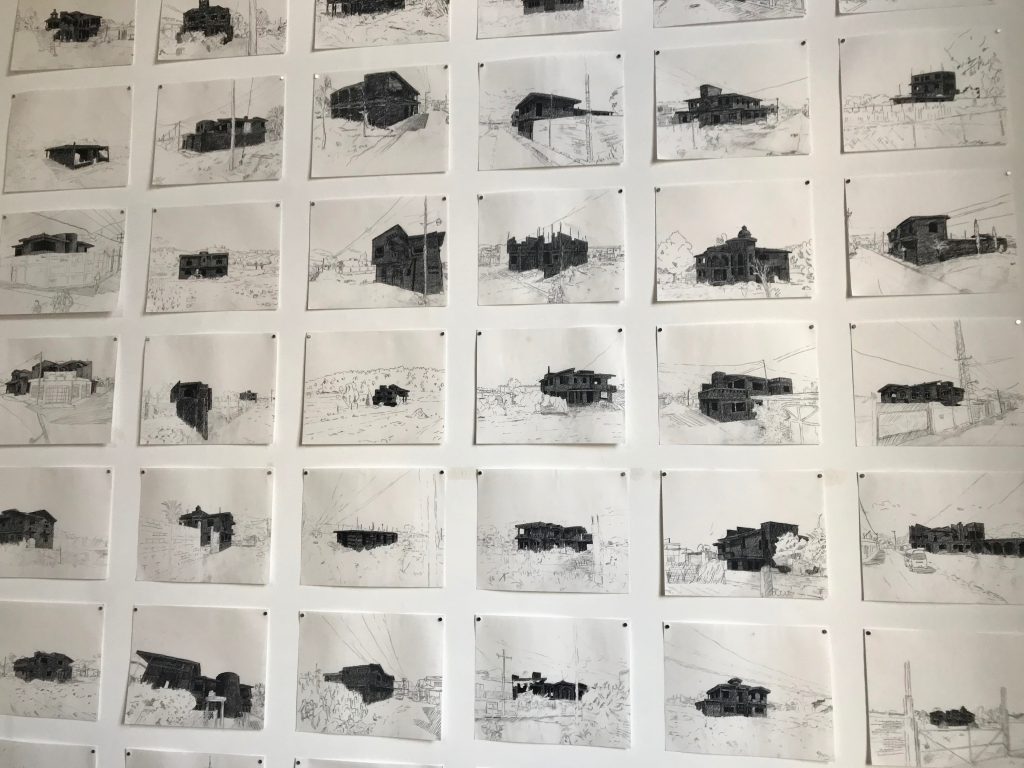
Jairo Banuelos created “An Acting of Kneading” with paper made from corn husks.
Bryan Ortiz created a series of charcoal drawings of 49 of the vacant homes in Coapan. The houses speak to the dreams of those, like the elder Cuatlacuatls, who live as undocumented workers in the United States while hoping to return to their homeland.
DACA allowed their sons to visit Mexico. Federico now has permanent resident status in the U.S.
DACA also allowed the brothers to go to graduate school. Federico earned his Master of Fine Arts degree in animation at Bowling Green State University. He teaches at the University of Virginia in Charlottesville.
An enormous kite he created with master kite maker Pedro Cuacuas is included in “Pisando Lodo.” He welcomed Cuacuas to work with the artists during the Rasquache residency, and then started collaborating with him. Early in their partnership they created kites out of tiki torches “a response to Nazis arriving in Charlottesville” in 2017, Cuatlacuatl said.
The kites are “cultural weapons” for protests, including those over the deaths of children in detention centers, he said. “The idea of smuggling traditions and culture as a form of resistance is what drives that project forward.”

Cuatlacuatl is pessimistic about any progress in resolving the immigration crisis.
The Biden Administration has “pretty much acknowledged it is beyond them,” he said. “There’s certain things they can work into their diplomacy . … Immigration is a global humanitarian crisis now. To address that problem is overwhelming. … There’s just no simple way to resolve that.”
The kite and most of the rest of the exhibit, plus work by artists associated with Ohio State University, where he taught for a year, will be included when the exhibit moves to Charlottesville.
He’s also organizing a solo traveling exhibit of his brother’s work, which is scheduled to open in February 2022 at Ball State, where they both did their undergraduate work. He’s been talking with Paula Baldoni, proprietor of the River House Arts, about the possibility of bringing the exhibit to Toledo. “It would be ideal to have his work back here again,” he said. “Eventually, I would want it to go to Cholula, our home place.”

